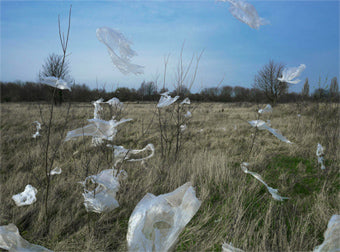

The Unseen Threat of Microplastics in Our Water
Microplastics are infiltrating our daily lives, and the extent of this issue is both alarming and concerning. Most notably, we are inadvertently consuming microplastics through our drinking water. In this blog post, we aim to shed light on this growing problem and its potential health risks. Towards the end, we'll introduce Ionza's solution to filter out these microplastics, offering you a safeguard against these particles and, to a large extent, nanoplastics.
The WHO's Concern: Plastic in Drinking Water
The World Health Organization (WHO) has initiated a review to assess the potential risks associated with plastic in drinking water. Recent analyses of popular bottled water brands have revealed that over 90% of them contain tiny plastic particles. Additionally, tap water worldwide is already significantly contaminated, with 90% of global tap water containing microplastics.
Microplastics in Unlikely Places: Rainwater
Researchers have observed a surprising phenomenon – the presence of microplastics in rainwater. In the Pyrenees Mountains in southern France, scientists recorded a daily deposition rate of 365 microplastic particles per square meter from the sky. What's astonishing is that there were no apparent local sources of these microplastics within a 60-mile radius, indicating that microplastics can travel through the air.
Understanding Microplastics and Nanoplastics
Microplastics are minuscule plastic fragments that contaminate the environment. They result from the degradation of larger plastic items exposed to natural elements, such as UV light and physical forces. These particles infiltrate ecosystems from various sources, including plastic bottles, bags, polystyrene, glitter, cosmetics, clothing, and industrial processes. Their size typically ranges from 5000 to 0.1 micrometers (µm), with nanoplastics measuring from 0.1 µm to 0.001 µm.
Microplastics and Health Risks
Microplastics possess an alarming characteristic – their ability to accumulate heavy metals like mercury and persistent organic pollutants (POPs), which are banned by the WHO due to their health hazards. These pollutants can disrupt hormonal functions, leading to various endocrine-related diseases and disorders, including reduced semen quality, genital malformations, adverse pregnancy outcomes, neurobehavioral disorders, and an increased incidence of endocrine-related cancers. Additionally, the global rise in obesity and type 2 diabetes is a growing concern.
Complex Nature of Plastic and Nanoparticles
Plastic is a diverse material that contains various additives, such as pigments, UV stabilizers, water repellents, flame retardants, bisphenol A (BPA), and phthalates. These additives can leach into the surroundings, making it challenging to determine their individual health effects. Furthermore, nanoplastics, which are even smaller than microplastics, present unique chemical and physical properties, increasing their reactivity. Lab studies have shown that nanoplastics can affect aquatic organisms' behavior and endocrine function.
Addressing the Issue with Ionza
Ionza offers a solution to combat the infiltration of microplastics in drinking water. Our ULTRA ADD-ON Filter is designed to remove micro and nanoplastic particles as small as 0.01 µm (10 nanometers) and also eliminates bacteria and cysts. You can easily incorporate this filter into your existing filter fountain or water ionizer. Additionally, we provide complete water filter systems like ULTRA X and ALKA ULTRA X, equipped with the ULTRA filter, suitable for both city and rural environments.
Take Action to Protect Your Health
The presence of microplastics in our environment is a growing concern, and it's essential to take proactive steps to safeguard your health. Ionza's ULTRA ADD-ON Filter and comprehensive water filter systems offer an effective defense against microplastics in your drinking water. For further assistance, please reach out to our team, and we'll be happy to guide you.


Sources:
https://www.efsa.europa.eu/de/press/news/160623
https://www.nationalgeographic.com/environment/2019/04/microplastics-pollution-falls-from-air-even-mountains/
https://www.theguardian.com/environment/2018/mar/15/microplastics-found-in-more-than-90-of-bottled-water-study-says
https://www.who.int/ceh/publications/endocrine/en/
https://greentumble.com/serious-effects-of-plastic-pollution-on-human-health/
https://en.wikipedia.org/wiki/Microplastics
















